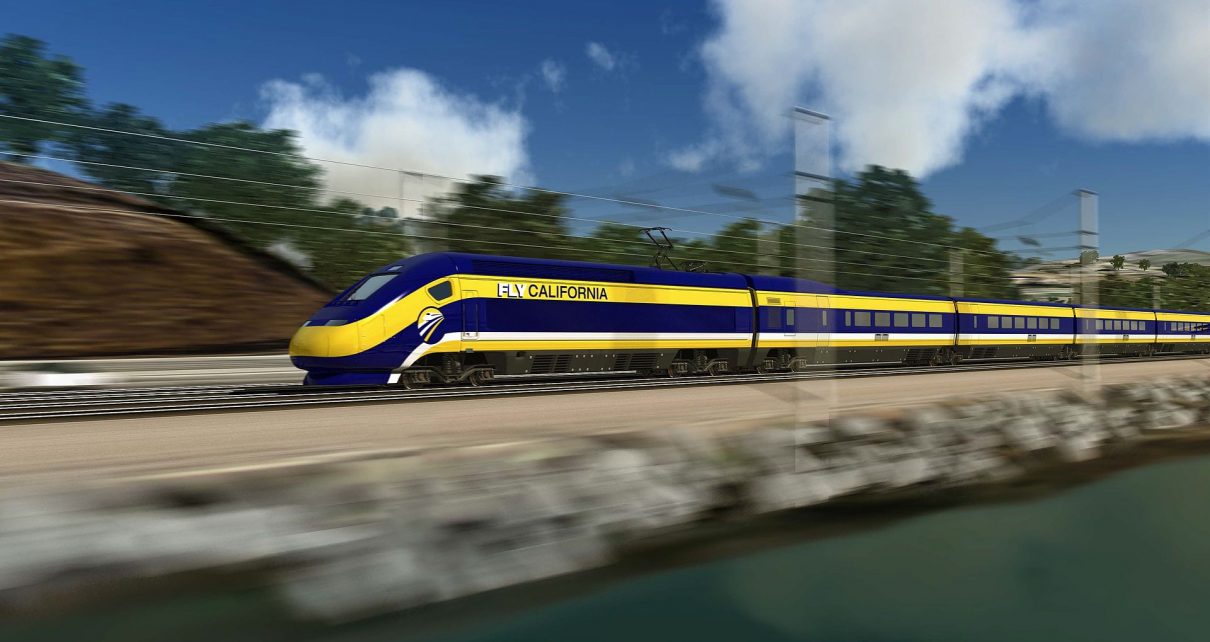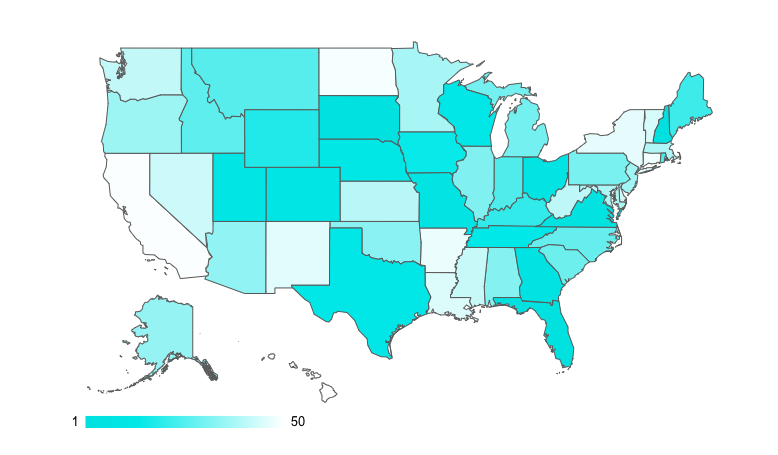
High Speed Rail train, artists rendering. (Photo: CHSRA.ca.gov)
‘Your Ass and a Hole in the Ground’ – A Comparative Study
…A Class the HSRA Would Fail
By Thomas Buckley, December 14, 2022 2:45 am
So “Your Ass and a Hole in the Ground” is from David Letterman’s “Top 10 Courses Taken by Basketball Players at UNLV” from decades ago about basketball players take.
That nasty great aunt you haven’t talked to in years has finally died and, surprisingly, she left you $1 million dollars.
There is a caveat to the bequest – you have to use the money to build a house – not buy, but build – in the next two years.
Okay – neato!
Step one – find the land.
Step two – check out the local zoning regulations and building codes.
Step three – check the title and buy the land.
Step four – talk to an architect.
Step five – hire a contractor.
Step six – finalize design and budget.
Step seven – finalize all of the regulatory approvals.
Step eight – build the house.
Step nine – decide you want a bigger kitchen sink and have it changed.
Step ten – move in and reap the benefits of a new and wonderful life!
The process can be a bit frustrating and always takes more time than you think it should and it probably ends up costing a bit more than you expected and you have to kick in a few grand over the free million you got but, in the end, it’s a great new thing for the entire family.
So, let’s change the $1 million to $200 billion (still not your won money, though) and change “you” to the California High Speed Rail Authority (HSRA) and the house to a train. Even with those changes, the process should follow the same basic outline, right?
No, noo, noo, nooo, no, nooo – not even close.
Let’s take it step by step –
One – find the land.
The HRSA took years to decide where to exactly put the train and has yet to finalize sections of the project – particularly the phase two link from Los Angeles to San Diego (hint to the HSRA – Corona and San Bernardino are not the same place.) Examples – https://www.sanjoseinside.com/news/bullet-train-route-connects-gilroy-with-san-jose-through-morgan-hill/ and https://www.theguardian.com/us-news/2019/feb/12/california-high-speed-rail-la-san-francisco-cancelled .
Two – check out the local zoning regulations and building codes.
The voters of California approved the initial bond to fund the project in 2008, though the state actually began planning the concept in 1996. A few months ago – 14 years along – the HSRA finally completed environmental approval for most – but not all of the project – see here: https://www.railjournal.com/passenger/high-speed/environmental-clearance-for-california-high-speed-line-to-san-francisco-completed/ . Even this news has a catch – from (italics added) the above story: “This will enable further work on the San Francisco – San Jose section to proceed when funding for final design, pre-construction and construction work becomes available.”
Three – check the title and buy the land.
This process is not even close to being finished and has been fraught with astonishing lapses – see here: https://www.latimes.com/local/california/la-me-bullet-train-cash-20190610-story.html and https://www.rtands.com/rail-news/beyond-comprehension-contractor-of-californias-high-speed-rail-project-says-large-chunk-of-land-still-has-not-been-acquired/ .
Four – talk to an architect.
The design of the system has changed multiple times since inception. From a completed $185 million station that may or may not ever see an HSRA train – ARTIC in Anaheim – to Merced, which, if anywhere, is most likely to actually need a station, the potential location for said station was just moved and little else has been accomplished: https://mercedcountytimes.com/big-plans-for-merceds-downtown-hsr-station/ . To describe the design and planning of the system as anything but chaotic, colossally costly, and the opposite of competent would be an understatement. And, of course, there is the route itself, the grade crossings, the slicing up of properties, the closure of businesses, and, being California, the need to protect wildlife – https://hsr.ca.gov/2022/04/19/3-million-grant-awarded-to-study-pacheco-pass-wildlife-overcrossing-near-future-high-speed-rail-line/ .
Five – hire a contractor.
It’s never a good sign when the contractor chosen comes under immediate fire for seemingly low-balling the bid: https://www.theatlantic.com/politics/archive/2014/12/that-winning-bid-for-californias-high-speed-rail-is-it-too-low/383737/ . The story does note one fascinating aspect of the deal and describes the bid amount as, um, “serendipitous” as it was for exactly $ 1,234,567,890 (read each numeral out loud and in order – you’ll get it.)
Since then, there have been multiple, many, lots of issues with the various contractors, from shoddy work to over-billing to delays – see here: https://californiaglobe.com/articles/california-high-speed-rail-authority-faces-another-two-year-delay-in-construction/ .
The rotating contractor saga continues, with the recent very very quiet decision to bring in Texas-based AECOM to be the new “project manager.”
Six – finalize design and budget.
Neither done, not even close, despite the very very early warning signs that the project may not exactly be a good idea: https://www.usatoday.com/story/news/nation/2014/01/03/stateline-california-rail/4303177/
Seven – finalize all of the regulatory approvals.
I find it very difficult to type while laughing so hard, but there’s this: https://www.govtech.com/transportation/california-bullet-train-section-faces-800m-overrun-delays.html .
Eight – build the house.
Bwaahhhahahahha!!!! : https://californialocal.com/localnews/statewide/ca/article/show/3806-high-speed-rail-california/
Nine – decide you want a bigger kitchen sink and have it changed.
Over the course of its lifetime, nearly everything about the project – including the kitchen sink – has been subject to cost overruns and delays, possibly caused by more sinister reasons than typically given for switching out a sink: https://www.dailybreeze.com/2022/02/16/the-bullet-train-just-keeps-on-failing-more/ . Oh, and now the HSRA wants to build its own 100 percent solar powered electrical system to power the trains.
Ten – move in and reap the benefits of a new and wonderful life!
-data not available-
Yes, building a railroad is a bit different from building a single house, but many of the principles in the process, as shown, are the same.
But the scale of the variance far far far far eclipses the scale of the difference between house and train. It is clear that – from even before the outset of the project – it was destined (designed?) to be exactly what it has become: a big pile of money ready for “legal” looting by the connected, the powerful, the people who run California, the people who have California into the ground.
Note – The examples above are just a tiny, tiny sample of the coverage of the issues the project has faced. Feel free to add your own, but I simply could not put everything in this article because the internet is not big enough.
- Where Does Gascon Go From Here? - April 25, 2024
- Anti-Semitism, Self-Immolation, Intersectionality, and DEI:What Do These Have in Common at UCLA Medical School? - April 25, 2024
- Los Angeles DA Gascon Ethics Chief Charged with 11 Felonies - April 24, 2024




It’s a CA version of FTX.